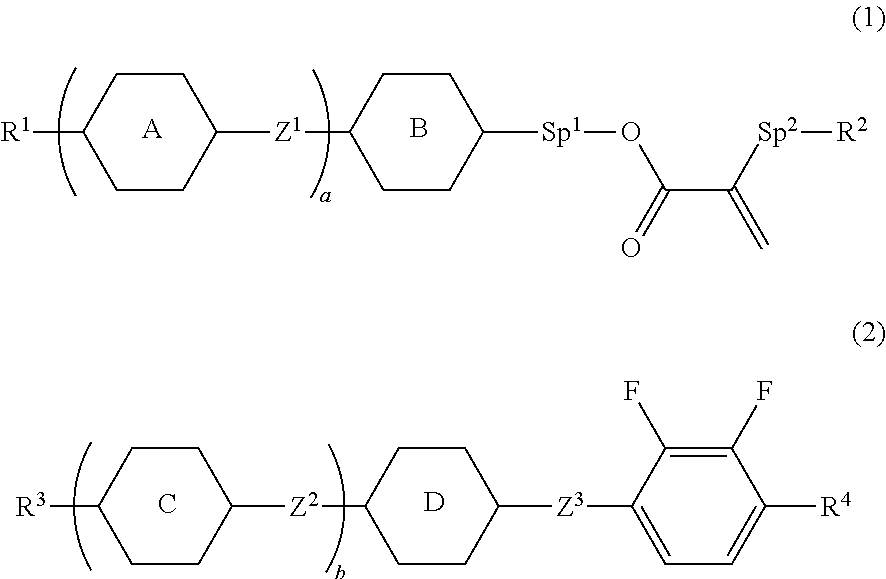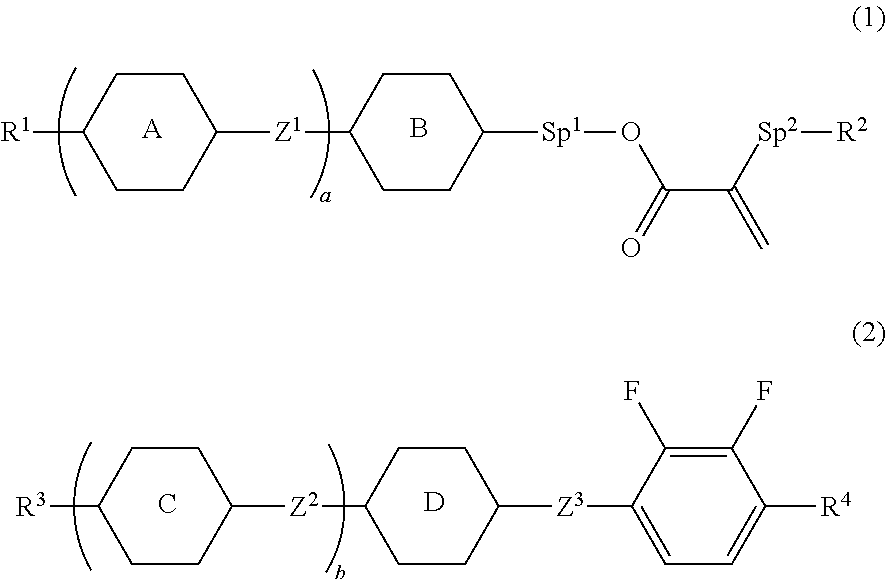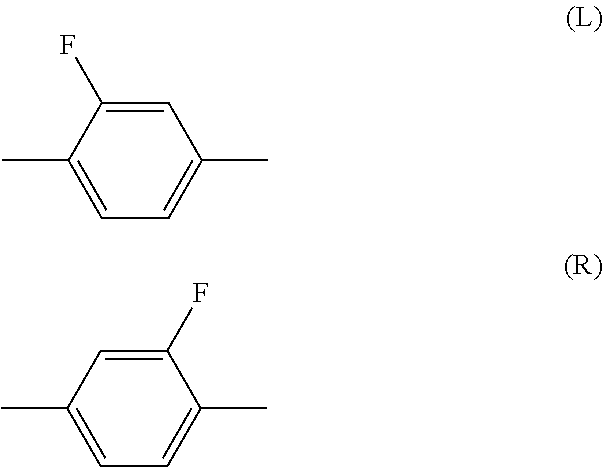Liquid crystal composition and liquid crystal display device
a liquid crystal composition and display device technology, applied in liquid crystal compositions, instruments, chemistry apparatuses and processes, etc., can solve the problems of large contrast ratio, small electric power consumption, and long service life of the device, and achieve stable alignment of liquid crystal molecules, shorten device response time, and high compatibility
- Summary
- Abstract
- Description
- Claims
- Application Information
AI Technical Summary
Benefits of technology
Problems solved by technology
Method used
Image
Examples
synthesis example 1
[0157]Compound (1-1) was prepared by the following method.
[0158]
First Step
[0159]Compound (T-1) (25.0 g), acrylic acid (7.14 g), 4-dimethylaminopyridine (DMAP; 1.21 g) and dichloromethane (300 mL) were put in a reaction vessel, and the resulting mixture was cooled to 0° C. A dichloromethane (125 mL) solution of 1,3-dicyclohexylcarbodiimide (DCC; 24.5 g) was slowly added dropwise thereto, and the resulting mixture was stirred for 12 hours while returning to room temperature. An insoluble matter was filtered, and then a reaction mixture was poured into water, and an aqueous layer thereof was subjected to extraction with dichloromethane. A combined organic layer was washed with water, and dried over anhydrous magnesium sulfate. The obtained solution was concentrated under reduced pressure, and the resulting residue was purified by silica gel chromatography (a volume ratio, heptane:toluene=2:1), and further purified by recrystallization from Solmix (registered trademark) A-11 to obtain c...
example 1
[0210]To composition (M1), polar compound (PC-1) was added at a proportion of 5% by weight. The resulting mixture was injected, on a hot stage at 100° C., into a device having no alignment film in which a distance (cell gap) between two glass substrates was 4.0 micrometers. Polar compound (PC-1) was polymerized by irradiating the device with ultraviolet light (28 J) using an ultra-high pressure mercury lamp USH-250-BY (made by Ushio, Inc.). The device was set to a polarizing microscope in which a polarizer is arranged perpendicularly to an analyzer, and the device was irradiated with light from below and presence or absence of light leakage was observed. When liquid crystal molecules were sufficiently aligned to prevent light from passing through the device, vertical alignment was judged as “good.” When light that had passed through the device was observed, the vertical alignment was represented as “poor.”
PUM
 Login to View More
Login to View More Abstract
Description
Claims
Application Information
 Login to View More
Login to View More - R&D
- Intellectual Property
- Life Sciences
- Materials
- Tech Scout
- Unparalleled Data Quality
- Higher Quality Content
- 60% Fewer Hallucinations
Browse by: Latest US Patents, China's latest patents, Technical Efficacy Thesaurus, Application Domain, Technology Topic, Popular Technical Reports.
© 2025 PatSnap. All rights reserved.Legal|Privacy policy|Modern Slavery Act Transparency Statement|Sitemap|About US| Contact US: help@patsnap.com



